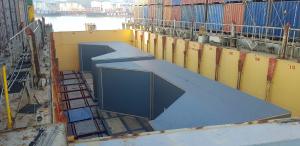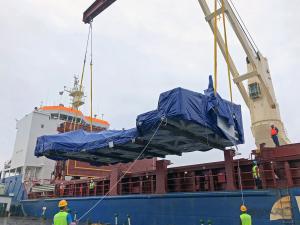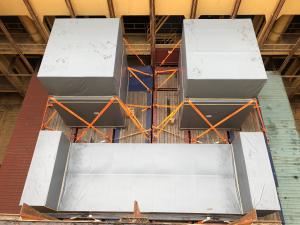300 tonnes of equipment on its way to ITER
In parallel, specialized tooling designed by Korea will enter into service next door in the Assembly Hall to manoeuvre, lift and in some cases pre-assemble components before their transfer to the Tokamak Building. Testing is underway now, for example, on the major sector sub-assembly tools (SSATs) that will allow contractors to join two D-shaped toroidal field and thermal shield panels to each 440-tonne vacuum vessel sector.
Also travelling are elements of the ITER thermal shield—steel panels coated with low-emissivity silver to protect cold components such as the superconducting magnets from thermal radiation. Two large sections—the cylindrical-shaped lower cryostat thermal shield (planned for installation early in the machine assembly sequence inside of the cryostat base) and the vacuum vessel thermal shield (that will be mounted directly on vacuum vessel sector #6 as it is suspended on the SSAT tool next year)—were shipped on two vessels out of the port of Busan on 1 and 15 September. A handling frame for the thermal shield sectors was shipped alongside the upending tool one week earlier.




